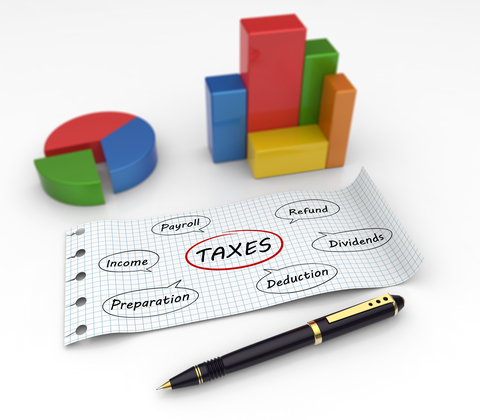 Yes, it’s that time again when you must file a tax return for your business and yourself. Whether you do this on your own or rely on a tax professional, preparing your tax return and meeting other tax obligations at this time of the year still entails work on your part.
Yes, it’s that time again when you must file a tax return for your business and yourself. Whether you do this on your own or rely on a tax professional, preparing your tax return and meeting other tax obligations at this time of the year still entails work on your part.
Here are 5 tips to help you in this filing season.
1. Decide who’s doing the filing
If you want to do it yourself, there’s tax preparation software to help. For example, TurboTax has products for preparing and filing returns for partnerships, S corporations, and sole proprietors; H&R Block offers options as well. You can buy what you need for your situation at Staples.
Or if you decide to use a tax professional, choose one as soon as possible; they get busy in this tax season. The IRS offers tips on choosing a tax return preparer.
2. Get your tax stuff together
You need to gather all the numbers for filling in your return … income, expenses, gains, etc. To do this, you need to be organized. Find more about getting organized in my earlier blog.
3. Mark your calendar
The deadline for filing your business’s 2017 return (and where required, furnishing owners with Schedule K-1 so they can prepare their personal returns) depends on your entity choice. Assuming you report on a calendar year as most small businesses do, then if you’re a:
- Partnership (or limited liability company filing a partnership return, the due date this year is March 15, 2018
- S corporation, the due date this year is March 15, 2018
- C corporation, the due date is April 17, 2018
- Sole proprietorship, one-member LLC treated as a disregarded entity, or an independent contractor, the due date this year is April 17, 2018
If, for any reason, you can’t meet this deadline, just ask for a filing extension by the deadline. There are three ways for an individual to get an extension. Corporations and partnerships must file Form 7004 to do so.
4. Pay your estimated taxes for 2018
While you may be focused on filing your 2017 return, don’t overlook your estimated tax obligations. Many small business owners must pay their projected tax for 2018 in four payments, the first one of which is due on April 17, 2018. This date is firm, even if you obtain an extension of time to file your 2017 return. You can rely on certain safe harbors to fix your estimated tax payments so you won’t be penalized, regardless of your final tax obligation. Or you can make an educated guess about what you’ll owe and pay a fourth of it by April 17th, based on your anticipated revenue and the impact that new tax rules will have on your tax bill for the year.
5. Keep tax records
You’re almost done with your tax filing responsibilities. But there’s one more thing: retaining tax records. Generally you need to keep records for at least three years, which is the usual period in which the IRS can audit you. But the time is extended to six years if you omit more than 25% of gross income from your return. And there’s no time limit if the IRS suspects fraud.
So keep copies of your return, proof of filing (e.g., the IRS’s acknowledgment that your electronically-filed return was accepted), and proof of the positions you’ve taken on your return (e.g., receipts, expense accounts, and other documentary evidence). Staples can help you store your tax records with products like the Staples Portable File Tote and Staples Letter/Legal Storage Box, both of which are on sale through March 3.
Final thought
Taxes may not be an enjoyable activity for you, but as Benjamin Franklin said, “In this world nothing is certain but death and taxes.”
This post was created in partnership with Staples. All opinions expressed in the post are my own and not those of Staples.


